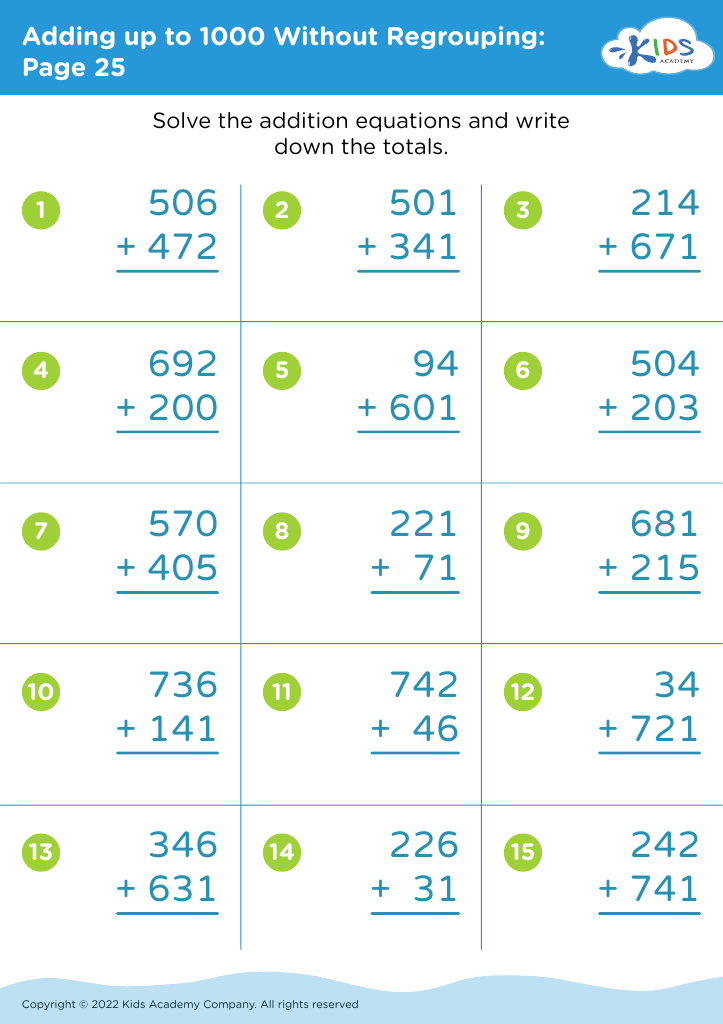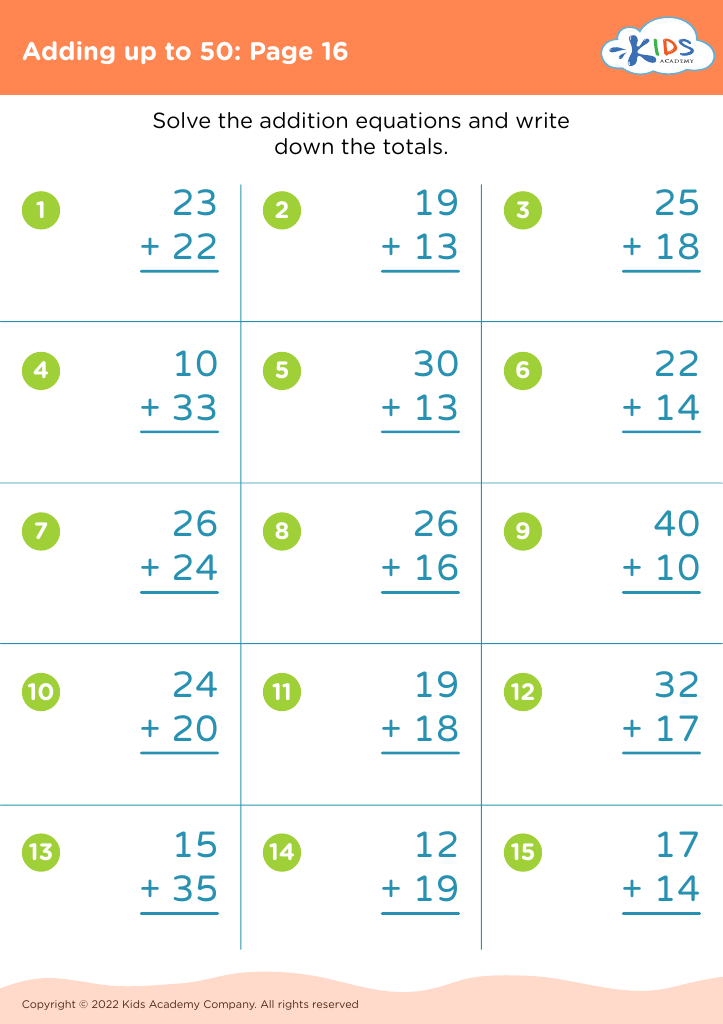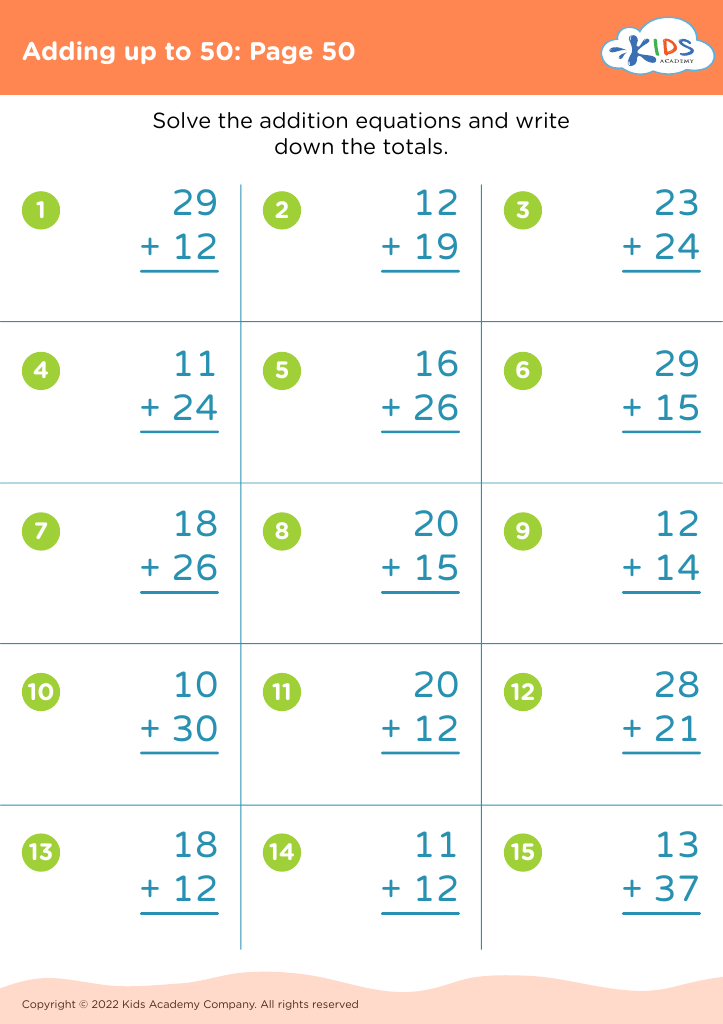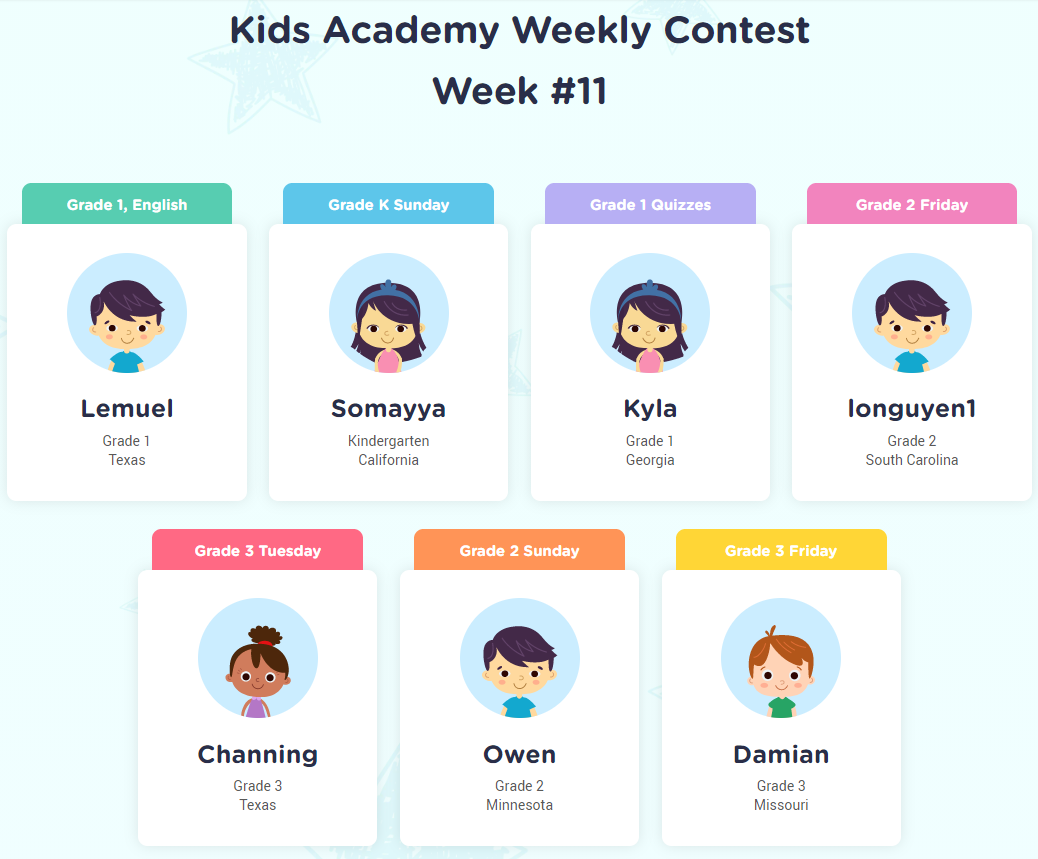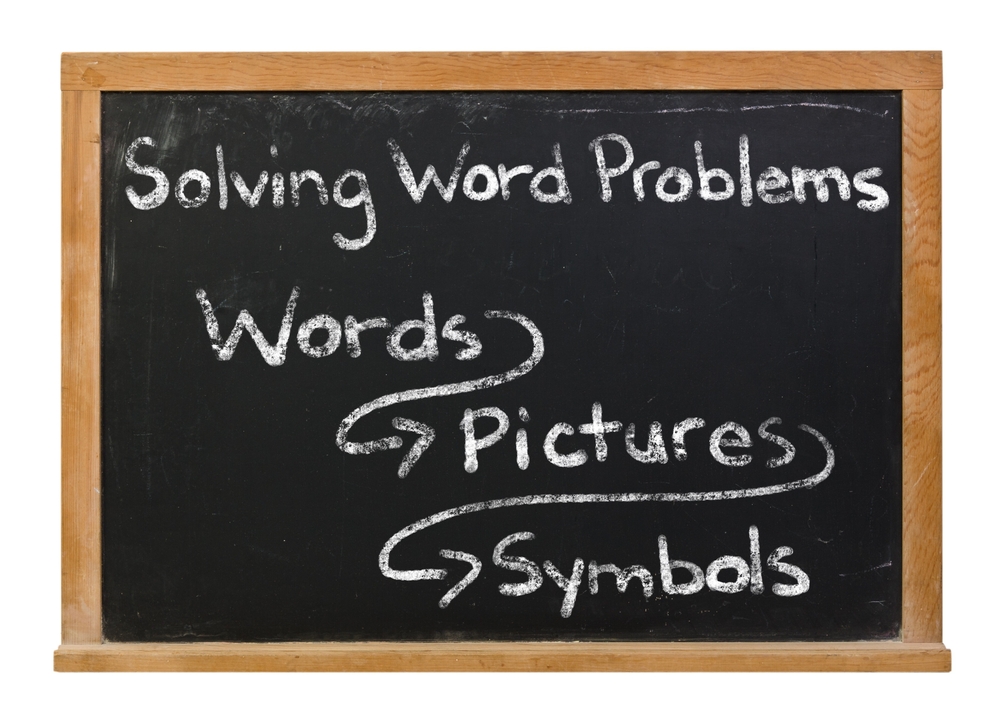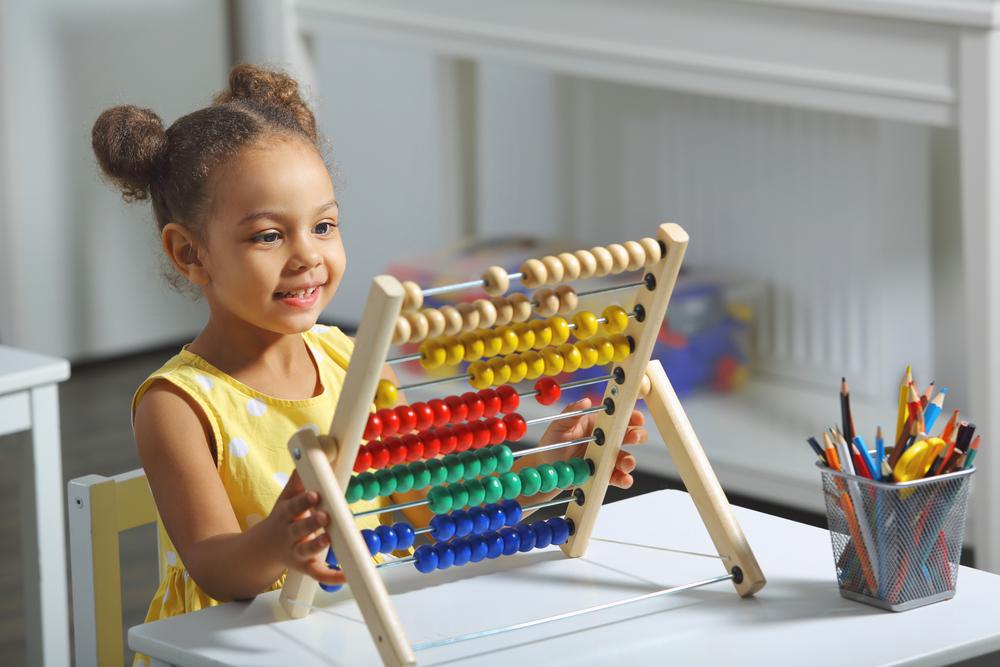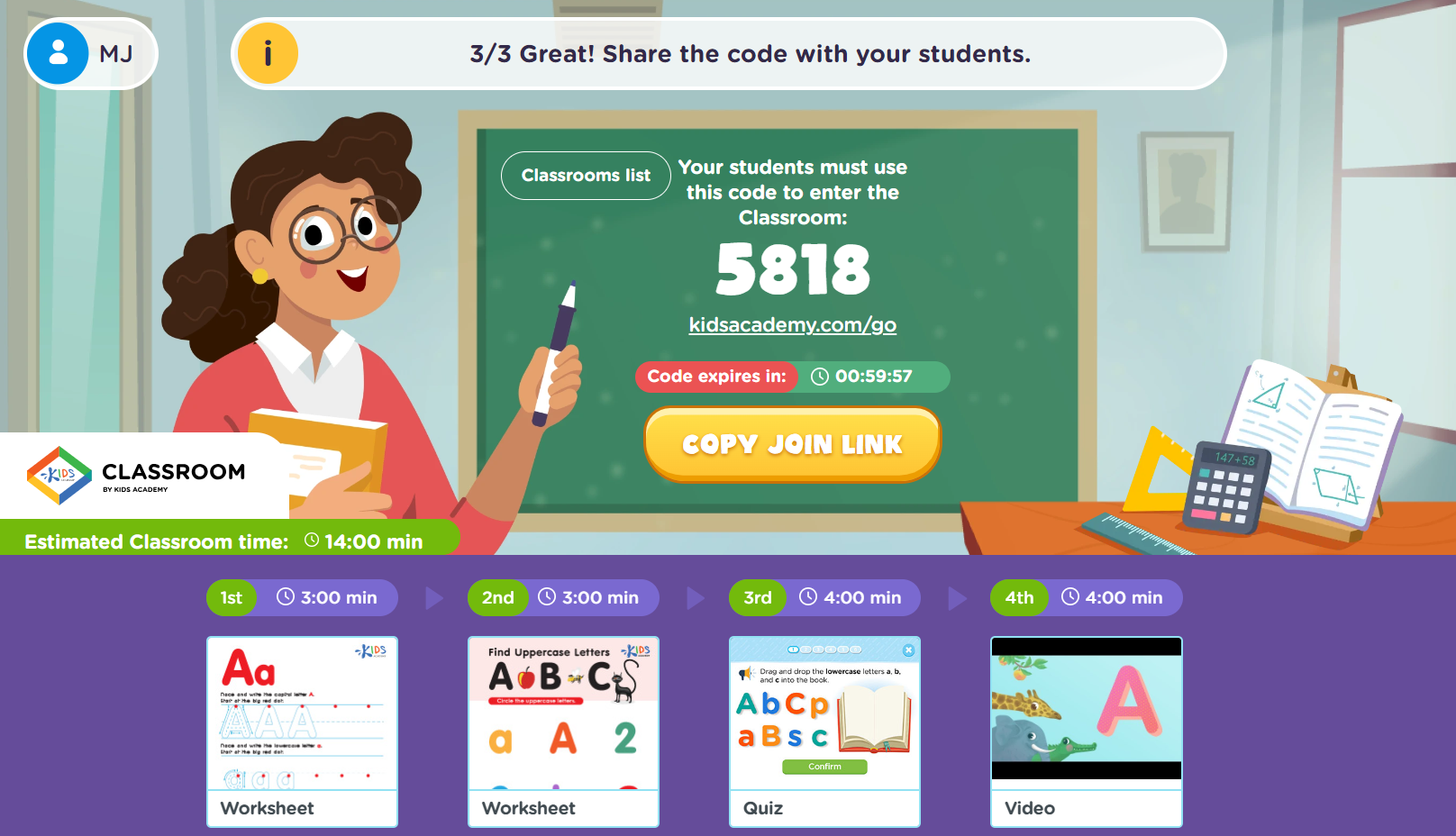Reading clocks Math Worksheets for Ages 3-8
7 filtered results
-
From - To
Explore our engaging Reading Clocks Math Worksheets designed specifically for children aged 3 to 8. These worksheets provide a fun and interactive way for young learners to grasp essential time-reading skills. With colorful visuals and age-appropriate activities, kids will enjoy mastering the concepts of analog and digital clocks. Our printable resources enhance early mathematical understanding while fostering cognitive development through hands-on practice. Perfect for home or classroom use, these worksheets support exciting learning journeys as children build confidence in telling time. Join us in making math enjoyable and accessible with our comprehensive collection of reading clocks worksheets!


Years Worksheet
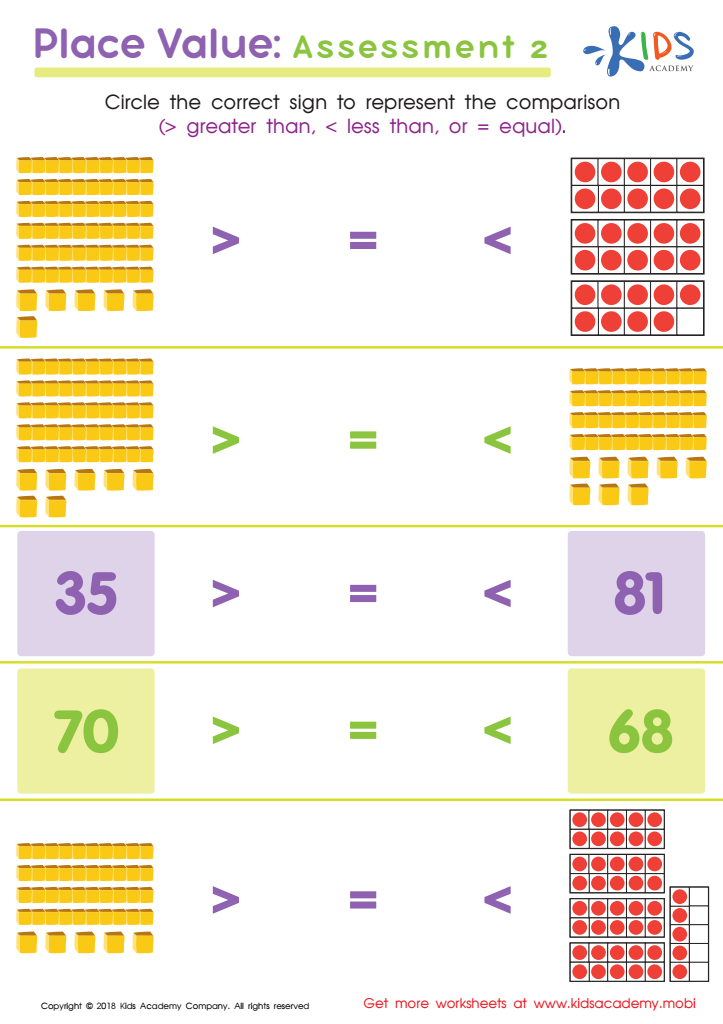

Place Value: Assessment 2 Worksheet
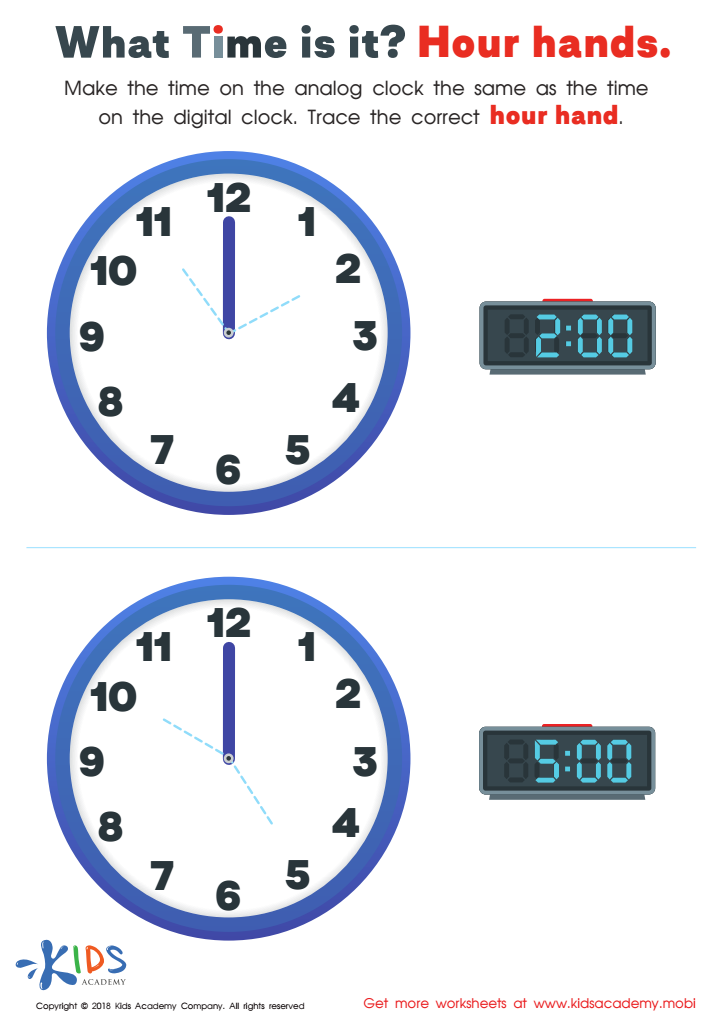

What Time Is it? Hour Hands Worksheet


Matching Time Worksheet
Parents and teachers should care about Reading Clock Math for children ages 3-8 because it lays the groundwork for essential life skills. Learning to read an analog clock fosters an understanding of time management and enhances cognitive development. At this age, children are naturally curious and eager to learn; introducing the concept of time through engaging activities can harness this curiosity and make learning enjoyable.
Understanding clock math encourages critical thinking and problem-solving abilities as children learn to calculate durations, decipher schedules, and make predictions based on time. It also helps reinforce numerical literacy as kids connect numbers to real-life applications. Moreover, digital reliance has overshadowed analog comprehension, making it vital to develop both skills for greater versatility in a technology-rich environment.
By instilling a foundational understanding of time, educators and parents are equipping children with skills that will serve them in school and beyond. Whether navigating daily routines, planning activities, or engaging in conversations about deadlines, grasping the concept of time is fundamental. Ultimately, teaching kids to read the clock is not just a math lesson; it’s a gateway to responsibility, independence, and successful future planning.
 Assign to My Students
Assign to My Students

